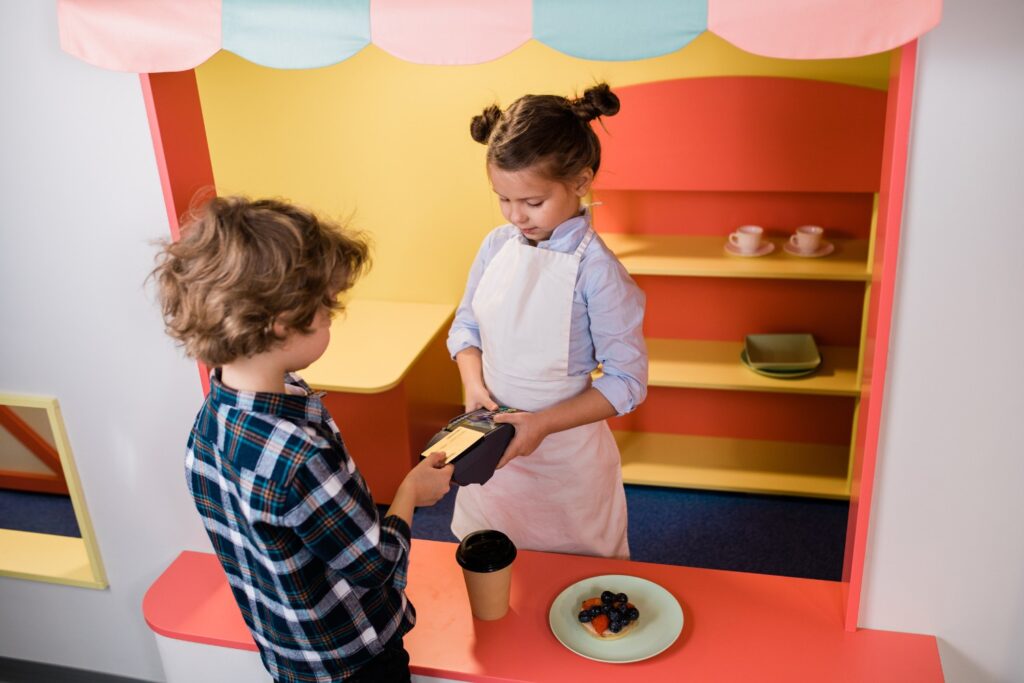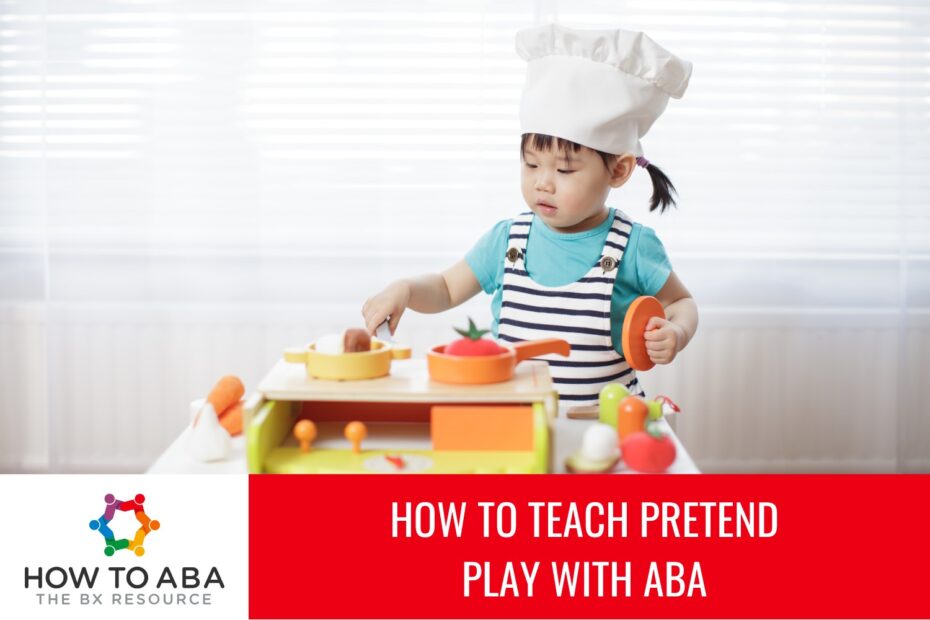Pretend play is a vital part of childhood development. After all, it’s where imagination meets learning. It allows children to express creativity, develop social and communication skills, and practice problem-solving in a fun, low-pressure environment.
For children with autism or developmental differences, pretend play might not come as naturally and may need teaching and support. Applied Behavior Analysis (ABA) offers structured, evidence-based strategies to help children learn and engage in pretend play.
This post will guide ABA professionals and educators through practical strategies like role-playing, play scripts, visuals, and video modeling to teach pretend play effectively.
Why is Pretend Play Important?
Before we jump into the “how,” it’s worth understanding the “why.” Pretend play fosters a range of skills, from creativity and language development to social-emotional growth and cognitive flexibility.
For instance, when children imagine being doctors or running a pretend bakery, they practice thinking beyond their immediate environment. This also creates opportunities for turn-taking, problem-solving, and collaboration with peers or adults.
However, children with autism may find play challenging due to difficulties with symbolic thinking, social communication, or flexibility. The good news is that with proper strategies, pretend play can become both accessible and enjoyable.
What are the Benefits of Pretend Play?
Teaching pretend play equips children with essential life skills, such as communication, social interaction, and cognitive flexibility. These skills often translate into real-world situations, like initiating conversations, collaborating on classroom projects, or bringing creative solutions to problems.
Teaching through play ensures that these lessons feel fun and motivating, which can make the learning process smoother and more impactful.

4 Strategies for Teaching Pretend Play Using ABA
1. Incorporate Role-Playing
Role-playing provides a structured way to engage in pretend play, guiding children to imagine themselves in various roles. Here’s how ABA professionals can make role-playing a powerful teaching tool:
- Set the Stage: Create a specific scenario, like playing grocery store or running a restaurant. Use simple props like toy food, shopping carts, or cash registers to make the experience tangible.
- Model the Interaction: Demonstrate the role by taking on the character yourself first. For example, say, “I’m the cashier, and you’re the customer. What will you buy today?” Show how to interact, ask questions, and respond appropriately.
- Use Prompts: Provide verbal or physical prompts to help initiate or continue the play. For instance, you might say, “Now it’s your turn to scan the groceries,” or guide them to hand over the toy money during the pretend transaction. Gradually fade prompts as the child becomes confident in the role.
- Practice Turn-Taking: Play scenarios like a classroom or tea party that naturally involve turn-taking to gently encourage collaboration and reciprocity.
Role-playing not only introduces pretend play, but also reinforces important social behaviors like patience, listening, and sharing.
2. Using Play Scripts
Play scripts are structured outlines or step-by-step guides that break down pretend-play scenarios into manageable tasks. They are incredibly useful when teaching pretend play with ABA principles because they provide clarity and predictability.
- Customize Scenarios to Interests: Choose topics that resonate with the child. If a child is fascinated by cars, create a play script for a mechanic shop. If they love animals, write a script where they’re running a pet store.
- Keep Scripts Simple: Break down each action or phrase into clear, achievable steps. For example, a pet store play script might include steps like “Step 1: Welcome a customer. Step 2: Ask them what pet they are looking for. Step 3: Suggest they feed the pet.”
- Use Repeatable Phrases: Encourage repetitive verbal scripts like, “What would you like?” or “Thank you, come again.” These phrases build communication skills.
- Gradually Increase Complexity: As mastery grows, scripts can evolve to include more steps or spontaneous dialogue. For example, the customer may have a problem with a toy dog, requiring the “pet shop owner” to troubleshoot creatively.
Play scripts combine structure and creativity, helping children develop confidence and autonomy.
3. Supporting with Visuals
Visual supports are highly valuable in ABA, especially for teaching pretend play, as they provide concrete cues to help children understand abstract concepts.
- Use Visual Props: Introduce pictures or flashcards of pretend-play items to help children connect real-life objects with imaginary scenarios. For instance, a picture of a chef’s hat can represent cooking, or a cash register prop can signify running a store.
- Visual Schedules: Create step-by-step visual guides for pretend play activities. For example, a visual schedule for a doctor’s office play might include pictures labeled, “Say hello,” “Use the stethoscope,” and “Give a Band-Aid.”
- Storyboards: Use a storyboard with images to show how the pretend-play scenario progresses. This is particularly helpful for children who need more visual cues to stay engaged.
With visuals, children can refer back to concrete supports as they practice play, reducing anxiety and fostering independence.
4. Video Modeling
Video modeling is a powerful ABA tool where learners watch a video demonstrating the desired behavior, then imitate it. It has proven to be effective for teaching complex or multi-step skills, like pretend play.
- Create Personalized Videos: Record videos of adults or peers engaged in pretend play scenarios. Choose scenarios the child is likely to enjoy, like playing teacher or building a space station.
- Use Peer Models: If possible, include peers modeling the play. This not only demonstrates the behavior but also promotes peer interaction.
- Replay and Practice: Watch the video together with the child, pausing to discuss key actions. Follow up with a practice session where the child acts out what they’ve watched.
- Highlight Success: Celebrate when a child mimics the actions, even if imperfectly. Repeated viewing and practice will refine their skills.
Video modeling helps bridge the gap between observation and action, making scenarios feel attainable and relatable.
How to Encourage Creativity in Pretend Play
While structured teaching is important, remember to leave room for creativity. Not every session needs to stick rigidly to the plan. For example, if a child playing as a chef decides to make “soup” using pretend coins instead of toy vegetables, lean into their imagination.
Flexibility promotes ownership over pretend-play activities, making them more enjoyable and engaging. When children are given the freedom to follow their creativity, pretend play also becomes a space for emotional expression and problem-solving.
Pretend play has the power to unlock a child’s imagination, build relationships, and develop life skills when taught intentionally through ABA principles. Role-playing, play scripts, visuals, and video modeling are all practical strategies to support children as they step into an imaginative world where learning effortlessly takes place. For ABA professionals, it is an opportunity to teach, connect, and inspire growth in meaningful ways.

